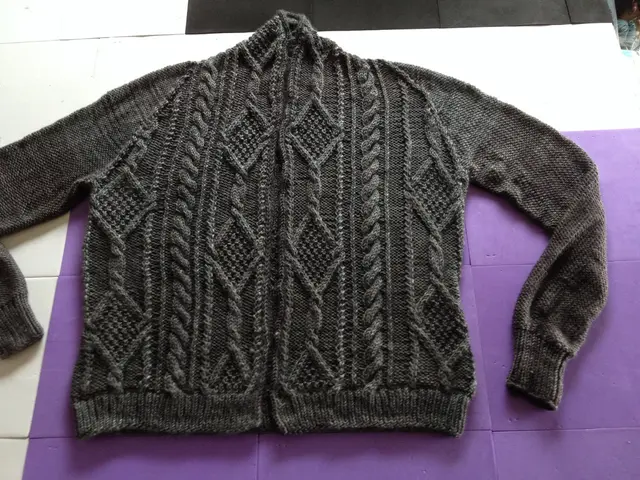Fuse Scandinavian and Japanese designs in a harmonious décor, called Japandi style.
=====================================================================
In the world of interior design, the Japandi philosophy is making waves as a captivating fusion of Japanese minimalism and Scandinavian (Nordic) functionality. This unique style, born out of a shared appreciation for simplicity, warmth, and practicality, creates harmonious living spaces that are both visually stunning and functional.
At the heart of Japandi design lies minimalism and simplicity, a principle that both traditions hold dear. The emphasis on uncluttered spaces with clean lines promotes calmness and order, creating interiors that exude a sense of tranquility.
Warmth is introduced through the use of natural materials such as wood, stone, and natural textiles like linen, wool, and cotton. The style balances Japanese darker woods with Scandinavian lighter woods, creating a harmonious blend that adds depth to the overall aesthetic.
Neutral, earthy color palettes form the base of Japandi design, with soft whites, greys, beiges, and earth tones dominating the scene. These muted shades are sometimes accented by muted greens, blues, or deep indigo to add subtle contrast.
Functional furniture is another key element of Japandi design. Pieces are both practical and aesthetically pleasing, often multifunctional to maximize space, especially in small living environments. The balance of coziness and austerity is achieved by softening the Japanese minimalism’s austerity with Scandinavian hygge’s inviting textures and warmth, creating spaces that feel serene yet comfortable and welcoming.
The author of a recent redesign embodies these principles, transforming spaces into minimalist yet warm, practical yet elegant environments. The author's color strategy is to let materials shine, with walls wearing soft putty tones. Light ashwood became the foundation for flooring and furniture. Open shelving is used to display curated items like hand-thrown bowls or a single stem arrangement. Textured throw pillows in oat and moss colors add depth without visual noise.
The author discovered hanging planters add greenery without sacrificing surface areas. The author chooses multifunctional items like a platform bed with built-in storage or foldable dining tables for small spaces. Vertical space became the author's ally in creating functional, decluttered interiors. A trailing pothos plant softens clean-lined shelving.
The author uses vertical space in small spaces, installing floating shelves and keeping floor plans open to enhance the sense of calm. The secret to mixing modern minimalism with natural warmth lies in tactile contrasts. A slate coaster cradles the author's morning mug, its cool surface contrasting warm wood tones. The author rotates seasonal pieces to avoid visual noise in open shelving.
The author uses intentional layering to create functional, decluttered interiors. The author starts every redesign by asking "What does this area need to do?" The author maximizes natural light with sheer curtains and places paper lanterns or pendant lamps with bamboo details to create soft, diffused illumination.
In the redesign, the author uses a slim oak bench with hidden shoe storage beneath linen cushions for the entryway solution. The author avoids harsh overhead lights, instead layering ambient and task lighting. The living room transformation taught the author that spaces become sanctuaries when elements collaborate rather than compete.
Japandi design transforms spaces into minimalist yet warm, practical yet elegant environments, harmonizing the best aspects of Nordic and Japanese traditions into a timeless global style. The emphasis on craftsmanship and mindful living also highlights quality over quantity and authenticity in materials, resonating with contemporary desires for sustainable and meaningful design.
[1] Japandi: The Perfect Fusion of Japanese and Scandinavian Design. (2021). [online] Available at: https://www.architecturaldigest.com/story/japandi-design-trend
[2] Japandi: The Newest Design Trend That's Taking Over. (2021). [online] Available at: https://www.homedit.com/japandi-design/
[4] Japandi Design: The Perfect Blend of Scandinavian and Japanese Aesthetics. (2021). [online] Available at: https://www.mydomaine.com/japandi-design
- The harmonious blend of Japanese minimalism and Scandinavian functionality in Japandi design creates a lifestyle that values simplicity, warmth, and practicality, especially in furniture and interior design.
- The author's interpretation of Japandi design incorporates natural materials like wood, stone, and textiles, balancing the use of darker Japanese woods with lighter Scandinavian woods, and employs a neutral, earthy color palette with muted greens, blues, or deep indigo for subtle contrast.
- In the redesigned spaces, the author uses intentional layering and mindful selection to display crafted items like hand-thrown bowls, single stem arrangements, tactile contrasts like slate coasters, and multifunctional furniture that maximizes space, all while creating functional, decluttered interiors.
- Japandi design resonates with contemporary desires for sustainable and meaningful design by emphasizing craftsmanship, authenticity in materials, and the collaboration of elements rather than their competition, ultimately transforming spaces into minimalist yet warm, practical yet elegant environments.








